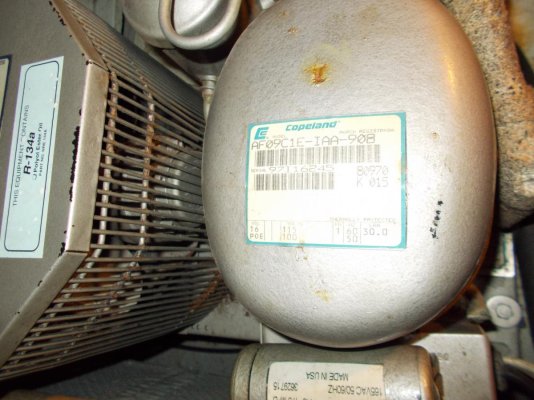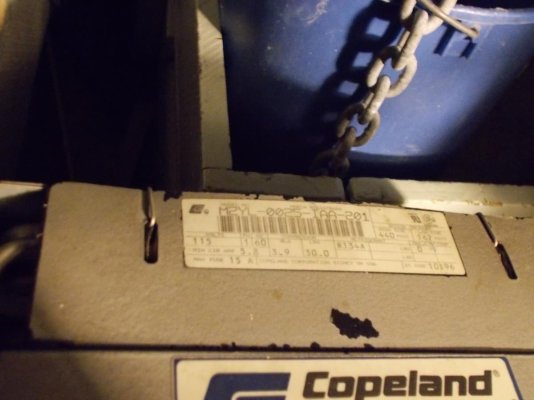Bustlebomb
Senior Member
- Joined
- Feb 2, 2014
- Messages
- 147
- Location
- USA
- Vessel Name
- Snooker (for now.....)
- Vessel Make
- 1981 34 Californian LRC
My previous boat had the standard 12V/110 refrigerator but the new vessel has a cold plate system and it doesn't seem to be working. I've never dealt with a cold plate system so this is all new to me.
As best I can tell, the system is a 110v, air cooled system. The compressor is a 134 unit by Copeland (I've attached a few photos below - sorry for the poor quality, I took them when I was just getting some numbers to look up on the internet).
When it is powered up, the compressor kicks in and it starts "cooling." By that, I mean that I can hear the compressor running. There are two copper lines coming out. One gets cool (not ice-cold) and the other gets warm (not hot) but the plate in the fridge seems to hover endlessly at 67 degrees (probably the temp in the insulated box), even when the system has run for a couple of hours.
There is a rotary temp control in the cabinet next to the box but playing with that doesn't seem to make a difference - I've set it at 40 degrees and at 10 degrees with no visible change in the temp of the plate. It does go higher and lower than that but I haven't tried to turn it down lower.
Do cold plates go "bad?" or do I need to get the system recharged? Is there an easy way to check? Are there any troubleshooting areas I can check myself before I get a professional involved?
Help please - the lack of cold beverages is making everything else on the boat much harder to troubleshoot!
Thanks,
Matt
As best I can tell, the system is a 110v, air cooled system. The compressor is a 134 unit by Copeland (I've attached a few photos below - sorry for the poor quality, I took them when I was just getting some numbers to look up on the internet).
When it is powered up, the compressor kicks in and it starts "cooling." By that, I mean that I can hear the compressor running. There are two copper lines coming out. One gets cool (not ice-cold) and the other gets warm (not hot) but the plate in the fridge seems to hover endlessly at 67 degrees (probably the temp in the insulated box), even when the system has run for a couple of hours.
There is a rotary temp control in the cabinet next to the box but playing with that doesn't seem to make a difference - I've set it at 40 degrees and at 10 degrees with no visible change in the temp of the plate. It does go higher and lower than that but I haven't tried to turn it down lower.
Do cold plates go "bad?" or do I need to get the system recharged? Is there an easy way to check? Are there any troubleshooting areas I can check myself before I get a professional involved?
Help please - the lack of cold beverages is making everything else on the boat much harder to troubleshoot!
Thanks,
Matt



